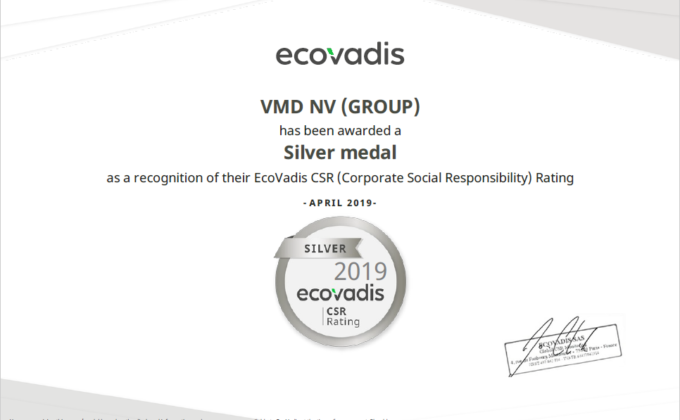Contents:


Thus, the first 1,700 units sold from the last batch cost $4.53 per unit. The inventory process at the end of a year determines cost of goods sold for a business, which will be included on your business tax return. COGS is deducted from your gross receipts to figure your gross profit for the year. Let’s imagine a stationery supplier, who has 300 units of pens in stock, purchased these in 3 batches of 100 units each.
Why LIFO Is Banned Under IFRS – Investopedia
Why LIFO Is Banned Under IFRS.
Posted: Sat, 25 Mar 2017 16:39:45 GMT [source]
FIFO inventory costing is the default method; if you want to use LIFO, you must elect it. Also, once you adopt the LIFO method, you can’t go back to FIFO unless you get approval to change from the IRS. And the last 800 units sold from Batch 1 cost $4 each, for a total of $3,200.
Fundamentals of Financial Management
Companies that undergo long periods of inactivity or accumulation of inventory will find themselves needing to pull historical records to determine the cost of goods sold. For this reason, companies must be especially mindful of the bookkeeping under the LIFO method as once early inventory is booked, it may remain on the books untouched for long periods of time. The FIFO method favors a stable or deflating Economy, and the LIFO method favors an inflating economy.
- The proposed shift of U.S. public companies to IFRS could affect many companies currently using LIFO for both financial reporting and taxation.
- If inventory unit costs rise and LIFO liquidation occurs, an inventory-related increase in gross profits will be realized.
- In these circumstances, to reduce the First In First Out value of inventory to the Last In First Out value, the Last In First Out reserve needs to be a credit entry.
The most recent purchases probably more accurately reflect the current impact on cashflow of purchasing inventory. Another reason not to add the LIFO reserves, or even this year’s changes in LIFO reserves, back for cashflow purposes. A declining reserve is an important indicator that can be used for analyzing the profitability of a company and its sustainability. This method is quite popular in the United States and is allowed under US GAAP .
Worldwide Investment at Risk as Policies Critical to Capital Investment Phase Out
With inflation high again, LIFO may become the preferred choice for more businesses. However, LIFO comes close to matching the economic ideal while still remaining true to the accounting principle. Hearst Newspapers participates in various affiliate marketing programs, which means we may get paid commissions on editorially chosen products purchased through our links to retailer sites. In other words, the cost of goods purchased last (last-in) is first to be expensed (first-out). For example, a company that sells seafood products would not realistically use their newly-acquired inventory first in selling and shipping their products.
Your financial situation is unique and the products and services we review may not be right for your circumstances. We do not offer financial advice, advisory or brokerage services, nor do we recommend or advise individuals or to buy or sell particular stocks or securities. Performance information may have changed since the time of publication. FIFO is more common, however, because it’s an internationally-approved accounting methos and businesses generally want to sell oldest inventory first before bringing in new stock. The Fine company uses FIFO method for internal reporting and LIFO method for external reporting. The inventory on December 31, 2021 is $180,000 under FIFO and $130,000 under LIFO.
Compensation Plans for Car Salesmen
However, indirect effects—for example, bonuses—are reflected prospectively . The change in the LIFO Reserves from one year to the next indicates that year’s difference. It will be an increase in years of rising prices if all the inventory sold was purchased during the period. It can be a decrease either in periods of dropping prices for inventory or if the inventory sold this period was greater than purchases, and therefore ‘dipped’ into pools of lower priced inventory. LIFO might be a good option if you operate in the U.S. and the costs of your inventory are increasing or are likely to go up in the future. By using this method, you’ll assume the most recently produced or purchased items were sold first, resulting in higher costs and lower profits, all while reducing your tax liability.
The LIFO reserve is a ledger account that records the difference between the FIFO and LIFO methods of the inventory report. It helps in outlining the many differences between using the LIFO method and using the FIFO method. Looking at both the LIFO and FIFO methods, both have advantages and disadvantages and work better under certain conditions. The LIFO reserve is used by a company when it calculates its inventory and cost of goods using the First in First Out method but records it under The Last in Last Out method when doing the inventory report.
US companies may choose between the LIFO or the FIFO method(there are other methods too, but for now, we’ll focus on the comparison of these two). With LIFO, the inventory purchased in Batch 3 and then Batch 2 are assumed to have sold first, while Batch 1 still remains on hand. To understand further how LIFO is calculated despite real inventory activity, let’s dive into a few more examples.
The objective of using LIFO for external purposes is the inflationary economic conditions resulting in higher inventory costs. LIFO Reserve is also known as Excess of FIFO over LIFO cost, LIFO allowance, and Revaluation of LIFO. LIFO reserve is a beneficial accounting measure for external stakeholders to assess the profitability and financial health of the company. Most companies use the LIFO method for external reporting due to the tax savings and the non-LIFO method for internal reporting. As a result, a reserve of the difference between LIFO inventory cost and non-LIFO inventory cost.
It May not be beneficial to the organization as it decreases the interest of investors due to decreases profitability. Use to keep track of the difference between method used for internal purpose and method used for presentation purpose. INVESTMENT BANKING RESOURCESLearn the foundation of Investment banking, financial modeling, valuations and more. Reported by the company using the LIFO Method and company using the FIFO Method.
When the company provides this reserve, we can easily calculate FIFO inventory using the below formula. Cassie is a deputy editor, collaborating with teams around the world while living in the beautiful hills of Kentucky. She is passionate about economic development and is on the board of two non-profit organizations seeking to revitalize her former railroad town. Prior to joining the team at Forbes Advisor, Cassie was a Content Operations Manager and Copywriting Manager at Fit Small Business. If you follow the LIFO method and fulfill orders using your most recent inventory, you’re more likely to provide your customers with a better experience.

If the company uses the FIFO inventory accounting method, it would deduct the cost of the first unit of inventory purchased, namely the unit purchased for $30 in January. Subtract $30 in costs from the $40 in revenue, and the company has $10 in income. Meanwhile, under the LIFO inventory accounting method, it would deduct the cost of the last unit of inventory purchased, namely the unit purchased for $32 in November.
Recall that with the LIFO method, there is a low quality of balance sheet valuation. Therefore, the balance sheet may contain outdated costs that are not relevant to users of financial statements. FIFO has advantages and disadvantages compared to other inventory methods. FIFO often results in higher net income and higher inventory balances on the balance sheet. However, this results in higher tax liabilities and potentially higher future write-offs if that inventory becomes obsolete. In general, for companies trying to better match their sales with the actual movement of product, FIFO might be a better way to depict the movement of inventory.
Adjusted Net Profit Margin
LIFO reserve is a bookkeeping technique that tracks the difference between the LIFO and FIFO cost of inventory. It takes the result of the cost of inventory found using the LIFO method and subtracts it from the value of the cost of inventory recorded using the FIFO method. This data is stored in an accounting inventory ledger called the LIFO reserve. LIFO Reserves calculation enables the company to comply with the accuracy and correctness of the information depicting the true picture of the company’s financial health, sales, taxes, costs, etc.
Hawkins, Inc. Reports Fourth Quarter and Fiscal Year 2022 Results – GlobeNewswire
Hawkins, Inc. Reports Fourth Quarter and Fiscal Year 2022 Results.
Posted: Wed, 18 May 2022 07:00:00 GMT [source]
statement of comprehensive income Description The company Adjusted current ratio A liquidity ratio calculated as adjusted current assets divided by current liabilities. The LIFO reserve is the difference between the inventory calculations conducted under LIFO rules and those done under the conventional FIFO (first-in-first-out) rules. The LIFO reserve shows how much more the LIFO method has calculated in cost of goods sold as compared to FIFO since the dealership started using the LIFO method. The LIFO reserve will increase in years of rising auto prices if all the inventory sold was purchased by the dealership during the year. The reserve will drop during years of falling inventory prices or if inventory sales outpace purchases.
The LIFO Method
The balance on the LIFO reserve will represent the difference between the FIFO and LIFO inventory amounts since the business first started using the LIFO inventory method. Inflation is abnormally high across most sectors compared to the last few decades. These levels of increased cost are leaving many companies looking for ways to conserve cash and capital in other areas.

The https://1investing.in/ from the sale of inventory is matched with the cost of the more recent inventory cost. LIFO liquidation occurs when the number of units in ending inventory is less than the number of units in the beginning inventory (i.e. the firms sells more than it purchases during the year). If inventory unit costs have gone up from year to year, this will increase gross profits. However this increase in the gross profit margin is temporary and not sustainable. LIFO usually doesn’t match the physical movement of inventory, as companies may be more likely to try to move older inventory first.

However, companies like car dealerships or gas/oil companies may try to sell items marked with the highest cost to reduce their taxable income. FIFO can be a better indicator of the value for ending inventory because the older items have been used up while the most recently acquired items reflect current market prices. For most companies, FIFO is the most logical choice since they typically use their oldest inventory first in the production of their goods, which means the valuation of COGS reflects their production schedule.
- LIFO LiquidationLIFO liquidation is an event of selling old inventory stock by companies that follow the LIFO Inventory Costing Method.
- When a unit of inventory is sold, companies can deduct the weighted-average cost of every unit of inventory held.
- The oldest, or first-in, unit of inventory, bought at the beginning of January that year, cost $200.
- Reported by the company using the LIFO Method and company using the FIFO Method.
- LIFO reserve is a bookkeeping technique that tracks the difference between the LIFO and FIFO cost of inventory.
There are several other methods of inventory accounting, the most common being weighted-average cost. When a unit of inventory is sold, companies can deduct the weighted-average cost of every unit of inventory held. In the example case here, that would mean the company would deduct $31 in inventory costs when they sell a unit in December, leading to $9 in income. LIFO Reserves are reported by the companies which use the LIFO method of inventory reporting as part of their financial statements in their footnotes.





